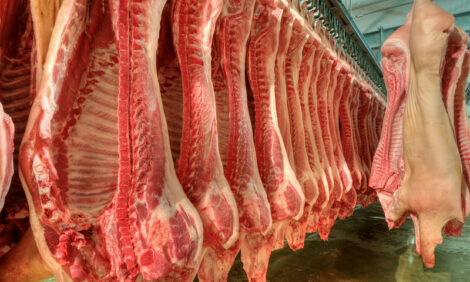



Biggest Ever Welfare Project in England
UK - Over 300 pig units will be invited to take part in the biggest ever welfare survey ever conducted by the English pig industry. BPEX’s ‘real welfare’ project is a new management tool for pig-keepers. It will help them improve the welfare of their pigs by scoring a number of meaningful welfare indicators, such as tail and body lesions, and lameness.
And it should also provide scientifically robust data to counter any unfounded claims by vegetarian and animal welfare groups.
European producers are likely to have their own ‘welfare quality’ scheme in due course, but for the present English producers are in the lead.
When the English project becomes part of farm assurance it will provide a new point of differentiation to help English producers maintain their 20p premium.
The 'real welfare' project is being run by a group comprising BPEX, producers, vets, researchers, RSPCA, and others.
It will involve specialist pig vets being trained to carry out welfare-outcome audits of pig farms, applying scores for a number of welfare indicators.
The results will be benchmarked so pig-keepers are able to compare their husbandry and take the necessary actions to improve welfare, and probably productivity too.
The RSPCA has been collecting its own welfare outcomes data for around two years and is now in a position to start analysing the data it has built up on body condition, eye and nose discharge, skin and tail lesions, limb injuries, fighting and abnormal behaviour.
All farms assured by Freedom Food and the Soil Association will be assessed and as the indicators chosen by the RSCPA are similar to those chosen for the BPEX scheme it might, in due course, be possible to compare data collected.
At a technical meeting last week, the BPEX group agreed that lesion counting was probably preferable to lesion scoring, as counting removes the subjectivity of deciding whether a flesh mark is a lesion or not.
During the scheme’s pilot stage, vets will work with BPEX and others to determine lesion thresholds — in other words, how many lesions on a pig indicate a possible welfare problem.
Eighty farms of each type of finishing system — fully-slatted, part-slatted, minimum straw and deep-straw — will now be invited to take part in the welfare outcomes project, with BPEX’s Lis Ravn acting as co-ordinator.
In the months ahead, the project team will provide the necessary information to producers to help them use results from the project as a useful management tool.
The five indicators to be assessed will each be the subject of an article in Pig World, explaining why the particular indicator has been chosen, and how it can be used to help assess welfare.
The BPEX ‘real welfare’ project could have a number of benefits as far as pig-keepers are concerned.
For instance it could help them demonstrate when welfare interventions such as tail-docking are essential in the interests of good welfare, and when the manipulable material they supply is effective as environmental enrichment.
It may also demonstrate that welfare standards on indoor units are as good as — or even better in some cases? — than on outdoor units, which are perceived by the public, and retailers, to be more welfare-friendly.
The project is underpinned by research carried out by University of Bristol. It is the result of a considerable ongoing investment of levy-payers’ money.
For more information see “English pig industry launches real welfare for pigs“, Pig World, March 2010.
The five measures to be assessed are:
- Lameness
- Tail lesions
- Body lesions
- 'Hospitalisation'
- Enrichment use.









